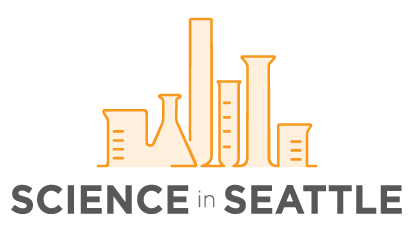This week we profile a recent publication in Cell Host & Microbe from Michael Gerner (pictured, right) and Kevin Urdahl (pictured, left) at UW.
Can you provide a brief overview of your lab’s current research focus?
Dr. Gerner’s group focuses on studying how local tissue microenvironments shape the generation of immune responses during vaccination, infection, and cancer. Fundamental questions explore how immune cells localize within different tissues during homeostasis and inflammation, how they communicate with their cell neighbors, and how cells integrate information from their surroundings to properly function. To address these directions, the laboratory develops and utilizes cutting-edge microscopy tools and analytical approaches, which permit quantitative visualization of the immune system on the molecular, cellular and anatomical levels directly in vivo. The long-term goals of these studies are to provide a better basic understanding of the immune response and to utilize this knowledge to improve vaccines and therapeutics.
Dr. Urdahl’s group seeks to understand how protective immunity against tuberculosis is mediated and to identify the barriers that prevent immune protection from occurring. His group has developed novel tuberculosis animal models that better reflect the complexities of human disease. They are currently using these models to investigate protective immunity. Hypotheses generated in animals are then tested in human studies to make sure they are true. The long-term goal of their work is to inform the rational design of vaccines and therapies to prevent and treat tuberculosis.
What is the significance of the findings in this publication?
Tuberculosis is the number one infectious killer in human history, a notoriety that remains true today. Developing effective vaccines and therapies has proven to be difficult because we understand poorly how immunity against tuberculosis is mediated and the barriers that must be overcome to achieve it. Tuberculosis occurs when a water droplet containing the bacterium Mycobacterium tuberculosis (Mtb) expelled by the cough of someone with tuberculosis and lodges in the lung. Infection is characterized by the formation of pulmonary granulomas, which are organized structures of cells that help physically contain the infection. However, granulomas also benefit the pathogen itself, by generating an environment that allows Mtb persistence by shielding it from the immune system. Using cutting-edge microscopy methods pioneered in the Gerner Lab together with models of Mtb infection in the Urdahl Lab, we found that immunity to Mtb is dominantly inhibited by a molecule, TGFb, which is highly enriched and spatially localized within the pulmonary granulomas. Release of the breaks imposed by TGFb led to induction of immune responses of markedly greater magnitude, function, and longevity, and this collectively improved bacterial clearance within the infected lungs. Together, these findings identify a major molecular pathway that restrains immune responses to Mtb infection as well as reveals new fundamental insights into the regulation of immune response longevity during chronic infection. This research also paves way for testing of TGFb inhibitors to treat Mtb infection, as is currently being done in cancer therapy trials.
What are the next steps for this research?
First of all, we plan to test diverse formulations of TGFb inhibitors to treat Mtb infection with our collaborators in Christoph Grunder’s lab at Seattle Children’s Research Institute. Interestingly, while TGFb was a very potent suppressor of the immune system, our findings also indicated that additional suppressive pathways are likely at play. Future research will focus on employing cutting-edge imaging and single cell RNA sequencing methods to identify these additional suppressive factors and to understand how they limit immunity to Mtb infection. Ultimately, we aim to combine the blockade of these immunosuppressive factors with potent vaccines with hopes that this will lead to markedly enhanced immunity and improved disease outcome.
This work was funded by:
This study was supported by the NIH grants 1R01AI134246, 1R01AI076327, U19AI135976, contract 75N93019C00070, R01AI134713, R21AI142667, T32HD007233, Washington Research Foundation postdoctoral fellowship, and a grant from the Firland Foundation.

